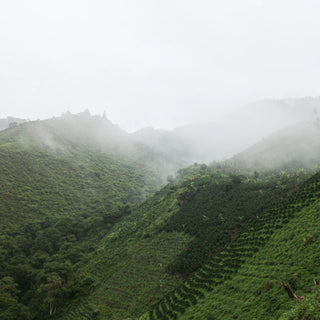


The Ramadan is our decaf coffee. A great cup to enjoy after dinner. It is sweet, round and it has a long pleasant aftertaste. It tastes good with or without milk. Brew it as espresso or filter and discover how yummy a decaf coffee can be.

Mild almond and fresh fruit flavors with good acidity and mellow sweetness.


The Ramadan is our decaf coffee. A great cup to enjoy after dinner. It is sweet, round and it has a long pleasant aftertaste. It tastes good with or without milk. Brew it as espresso or filter and discover how yummy a decaf coffee can be.

Mild almond and fresh fruit flavors with good acidity and mellow sweetness.

Decaf EA
Ethyl acetate is an occurring ester (present in bananas and also as a by-product of fermented sugars) that is used as a solvent to bond with and remove caffeine from green coffee. First, the coffee is sorted and steamed for 30 minutes under low pressure in order to open the coffee seeds’ pores and prepare them for decaffeination. The coffee is placed in a solution of both water and ethyl acetate, where the E.A. will begin to bond with the salts of chlorogenic acids inside the seeds. The tank will be drained and re-filled over the course of eight hours until caffeine is no longer detected. The seeds are steamed once more to remove the ethyl acetate traces, though E.A. is only harmful to humans in very high quantities (400 parts per million or more). The coffee is then dried and polished for export.

Process: Washed
Colombia is best-known for its Washed coffees. While the processing details might vary slightly from farm to farm or by association, generally the coffee is picked ripe and depulped the same day, then given an open-air fermentation in tanks or buckets for anywhere between 12–36 hours. The coffee is washed clean of its mucilage before being dried either on patios, in parabolic dryers, solar driers, or mechanically. Some Washed coffees in Colombia are mechanically demucilaged.

Variety: Castillo, Caturra, Colombia
Although this offering is not traceable to a specific variety, the most commonly grown coffee varieties in Colombia are Castillo, Caturra and the Colombia variety. This lot is representative of this blend of popular varieties, two of which (Castillo and Colombia) were developed by CENECAFE — the agronomical research arm of Colombia's FNC.

Region: Huila
Located in southwestern Colombia, Huila is nestled in-between the Central and Eastern ranges of the Andes, with the middle area called the Magdalena Valley. The variation in elevation results in Huila being one of the country's most unique and complex regions of coffee production. Its terroir, climate, and harvest cycles all contribute to the quality of coffee produced here. The most impressive quality behind the coffees coming out of Huila lies in the people producing them. While Huila accounts for nearly 20% of the country's production, 80% of coffee producers operate on less than three hectares.

Country: Colombia
Colombia holds a special place among coffee-growing countries for many reasons. Colombian coffee is well-known worldwide, but simply saying a coffee is from Colombia only scratches the surface of its story. Truly understanding Colombian coffee involves traveling its vast landscape, tasting countless cups, and visiting farms across the country, from north to south. The regional variations, diverse coffee varieties, and dedicated producers make Colombia a unique and fascinating origin.
From strong, versatile coffees to distinctive regional selections from areas like Cauca, Huila, Nariño, and Tolima, Colombian coffee offers a wide range of flavors and profiles. The country’s mostly smallholder farmers continue to cultivate these incredible coffees, and the exploration of new regions ensures that Colombia remains a beloved source of high-quality coffee for years to come.


